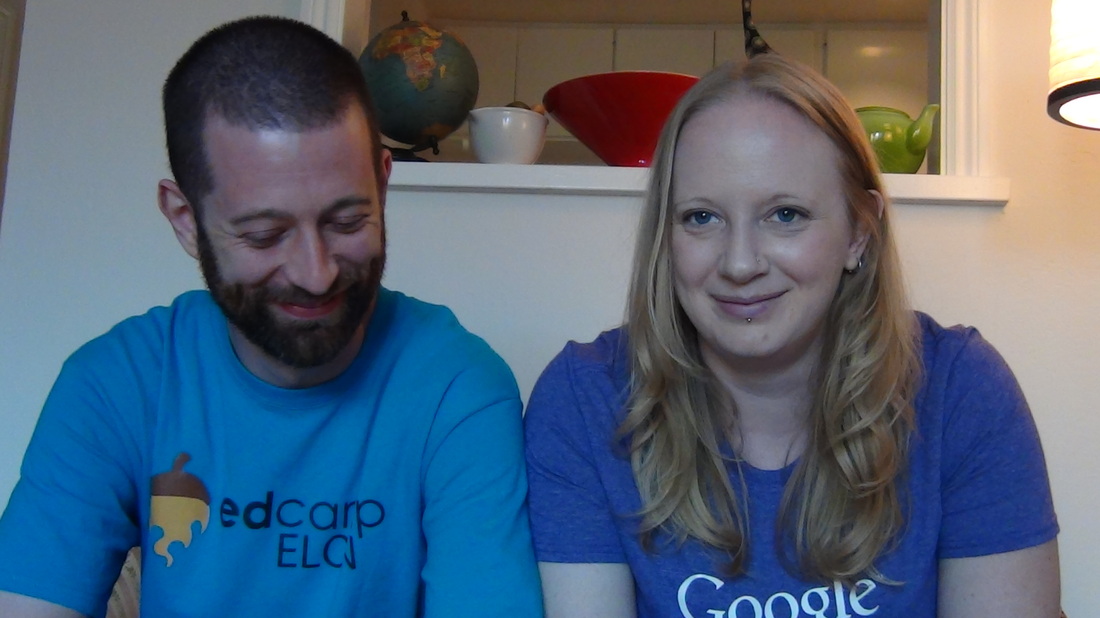I don't stop them from solving the puzzles during class because I understand why they need them: solving Rubik's cubes help them to calm the monsters that constantly pull for attention and gratification. These puzzles give them the element of control over a strong emotion: anxiety.
If you asked me what the number one problem facing my students right now, I would say - without hesitation - it's anxiety.
It didn't used to be this way.
And I get it; I really do.
I've lived with chronic pain for almost 12 years, and one of the side effects has been a dramatic increase in anxiety and restlessness. I don't know why chronic pain has changed my anxiety level, but the two are definitely correlated. I master that anxiety through knitting, detailed drawings, and looking up information related to the topic at hand, or if that all fails, I use stacks of new quarters to create a map of the United States by placing each state's quarter in its geographic location. This impulse to have something to do with my hands increases exponentially when I'm in a situation where I'm expected to be quiet.
I blame this on the fact that I was homeschooled for most of my K-12 schooling. And I was a two sport athlete (swimming and softball) used to working hard physically for several hours a day. Combine all of that with severe introversion and you get a perpetual motion machine with crushing anxiety in meetings.
But this isn't about me. It just happens to be the way that I'm most similar to my students.
That similarity leaves me closer to my students than my colleagues and allows me to clearly see a bifurcated way of thinking about student restlessness in the classroom.
On one hand, we have the flexible-seating-constant-moving-fast-paced instructional model. That's the camp I'm in, in case that was unclear (pretty sure it wasn't).
Then on the other hand, we have the it's-all-about-rigour-and-these-kids-are-so-lazy-with-their-technology-get-off-my-lawn-and-freaking-pay-attention-to-the-lecture-I'm-giving-that-no-one-but-me-finds-fascinating-because-you're-sure-as-hell-going-to-see-it-on-the-test camp.
The language I'm using there indicates how much validity I give that point of view, but part of that is that I'm so tired of hearing teachers complain about students using technology too much and students being lazy. Many of these same teachers spend all staff meeting texting, checking Facebook, carrying on side conversations, or surfing the internet on their phone, hidden carefully below the table.
The distinction beween the two camps is more than just pedagogical; it's practical, and touches on something teachers hate and students are obsessed with: grades.
I haven't given an F in six years. I grade 2-4 assignments for EVERY CLASS PERIOD, and out of 90 students, I had one D, 14 C's and the rest were A's and B's. That means that 83% of my students had a B or better with over 130 graded assignments.
I defy anyone to tell me that my students are lazy given those statistics. Even the D belongs to a student who ran out of ADHD medication for the last few weeks of the year and just couldn't hold it together. That student should have had a C or better under any other circumstance. But my students are engaging with texts above their ability level, working bell-to-bell, and regularly proclaiming how much fun they're having. They literally cheered when I told them we were doing grammar again today. They're disappointed to miss a Google Search Challenge or Silly Debate. They actually groaned when class ended we had to stop what we were doing...some stayed in to break to ask questions and propose theories.
But again, this division isn't about pedagogy. It's also about attention.
Attention just isn't the same now as it was before the emergence of social media and the smart-phone; teenagers have a brain that is almost at the peak of its ability to learn and take in new information, and its plasticity is unprecedented.
Consider this quote from the Susan Price, CEO of Firecat Studios from 2012:
“The amazing plasticity of the brain is nowhere as evident in the rapid adaptations humans are making in response to our unprecedented access to electronic information,” she wrote. “Those who bemoan the perceived decline in deep thinking or engagement, face-to-face social skills and dependency on technology fail to appreciate the need to evolve our processes and behaviors to suit the new reality and opportunities. Young people and those who embrace the new connectedness are developing and evolving new standards and skills at a rate unprecedented in our history. Overall, our ability to connect, share and exchange information with other human beings is a strong net positive for humanity.” [source]
That is who we're teaching now, and we can't pretend as if our students are the same as we were when we were in high school.
We have to accept that for teenagers and young-adults (myself included), "paying attention" is different. I have stopped giving students withering stares when they appear off-task, because most of the time when I ask what they're doing, they're looking up information about what we're learning, or they are done and are doing some extension task, or they're watching educational videos while they wait for everyone else to finish.
Or they are solving Rubik's cubes to manage anxiety levels.
Or they are knitting in faculty meetings in between taking notes, looking up the number of unique sounds in Mandarin (56, which the presenter didn't know off-hand when someone asked), and thinking about how to apply alike-level groupings during the next few repetitions of 8 pArts.
Different brains, different ways of paying attention, different ways of dealing with anxiety.
Same engagement. Anxiety managed.


 RSS Feed
RSS Feed
